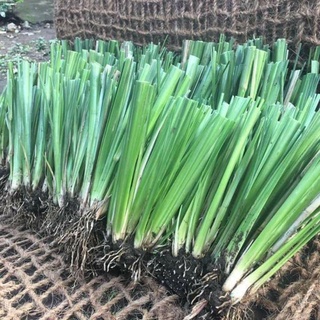Sell Vetiver Grass /Stalk Only for Slope protection/ Vetiver Grass Vegetation/PER PIECE best price
4.8
88
ratings
2k
sold
₱27
| Ships from | Calauan, Laguna |
|---|
Product Description
Vetiver Grass can live 3 weeks to 1 month even Not planted.(7 pesos per slip)
Vetiver grass is a densely tufted bunch grass which can be easily established in both tropics and temperate regions of the world. It plays a vital role in watershed protection by slowing down and spreading runoff harmlessly on the farmland, recharging ground water, reducing siltation of drainage systems and water bodies, reducing agro-chemicals loading into water bodies and for rehabilitation of degraded soils. Vetiver grass could tolerate extremely high levels of heavy metals. It could be used as biological pest control. The use of vetiver grass has been regarded as a low-cost technology for soil and water conservation; on- and off-farm land and water sources stabilization and remediation of polluted soils; and enhancement of water quality for irrigation purposes when compared with other soil conservation technologies.
Vetiver is a member of the same part of the grass family as maize, sorghum, sugar cane and lemongrass. It is an ancient plant that has been grown around the world for centuries, with great benefit .
A native of India, Vetiver has had a long history. The name comes from “vetiver,” a Tamil word meaning “root that is dug up.” The zizanioides was given by Linnaeus in 1771 and means “by the riverside.” As you would guess, the native habitat of this grass is in low, damp sites such as swamps and bogs. In spite of that, the grass is now being used on dry hillsides to control erosion.
Product Specifications
| Fertilizer Type | SLOPE PROTECTION |
|---|








